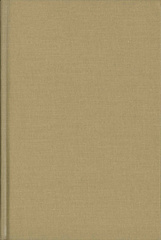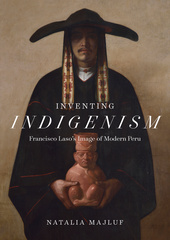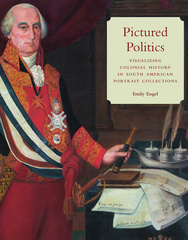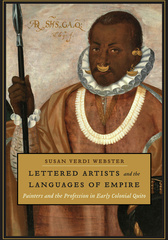Finding Caspicara
Double Identities, Hidden Figures, and the Commerce of Sculpture in Colonial Quito
An examination of sculpture and authorship in eighteenth-century Quito that documents Caspicara as a participant in the innovative artistic production of the city’s workshops and its widespread commerce of polychrome sculptures.
Who is Caspicara? Nothing is known of Caspicara’s life, and not a single sculpture has been documented as his work. Yet traditional histories laud him as a prolific Indigenous sculptor in eighteenth-century Quito who created exquisite polychrome figures and became a national artistic icon. Drawing on extensive archival, historical, and object research, Susan Verdi Webster peels away layers of historiographical fabrication to reveal what we do and do not know about Caspicara and his work.
Rather than being a solitary master, Caspicara collaborated with other, largely Indigenous artists in Quito’s protoindustrial workshops, manufacturing sculptures now credited to him alone. The high quality of Quito sculptures produced by anonymous artists turned the city into a hub of wide-ranging commerce in religious icons. The art world and post-independence Ecuadorians have lionized the one named sculptor, Caspicara, according to the Western model of the artist-genius, amplifying the market for works bearing his name and creating a national hero on par with European masters. Lost in this process were the artists themselves. Webster returns to their world, detailing their methods and labor and, for the first time, documenting a sculpture made by Caspicara.
Not only is Caspicara one of the most important names in the history of colonial art from the Andes, it is a key entry point for a discussion about the complex organization of artisanal workshops in colonial Quito; the materials and manufacturing techniques employed in the making of polychromed sculpture; the relationship between patrons and artists; the production of artworks for far-flung markets; and the exchange networks and circuits that assured their circulation. Susan Webster’s dedicated archival research corrects and updates the art historical record, questioning myths that have filtered our understanding of artistic practice in colonial Latin America. The new and rich historical and firsthand information contained in this volume makes it an important source for future studies in many disciplines.
What is in a name of an artist? What is the art behind the name? These are the questions that compose Finding Caspicara. Susan Webster’s work, however, is more than defining the question of whether Caspicara is a specific person. Rather it engages a larger set of problems that are often swept under the rug, either by saying most colonial Latin American artists are anonymous, or that the names of artists are often accepted without a critical biography. Webster unravels the mystery of who Ecuador’s national cultural hero was, what some of his works were, and why we all require such studies to understand why we need to question received knowledge.
Susan Verdi Webster is the Mahoney Professor emerita of Art History at the College of William & Mary. She is the author of Art and Ritual in Golden-Age Spain: Sevillian Confraternities and the Processional Sculpture of Holy Week.
- List of Illustrations
- Preface
- Acknowledgments
- Introduction
- 1. Inventing Caspicara
- 2. Painted Sculpture: The Paragone and Division of Labor in Quito
- 3. Caspicara in the Taller
- 4. Bultos and Body Parts: The Production and Commerce of Quito Sculpture
- 5. Caspicara in the Archive
- 6. Tracking Caspicara in Popayán: Confraternities and Holy Week
- 7. Hidden Figures: Caspicara and Quito Sculpture
- 8. Subsidiary Figures: More Commissions from Quito
- 9. Mise en Scène: Sculptures in Motion
- Conclusion: Seeing Caspicara Anew
- Appendix A. Last Will and Testament of Juan Manuel Legarda (Excerpt), 1773
- Appendix B. Inventory of the Confraternity of Saint Peter, Popayán, 1777
- Appendix C. Artistic Commissions from Quito to Popayán, 1792–1802
- Notes
- Bibliography
- Index







